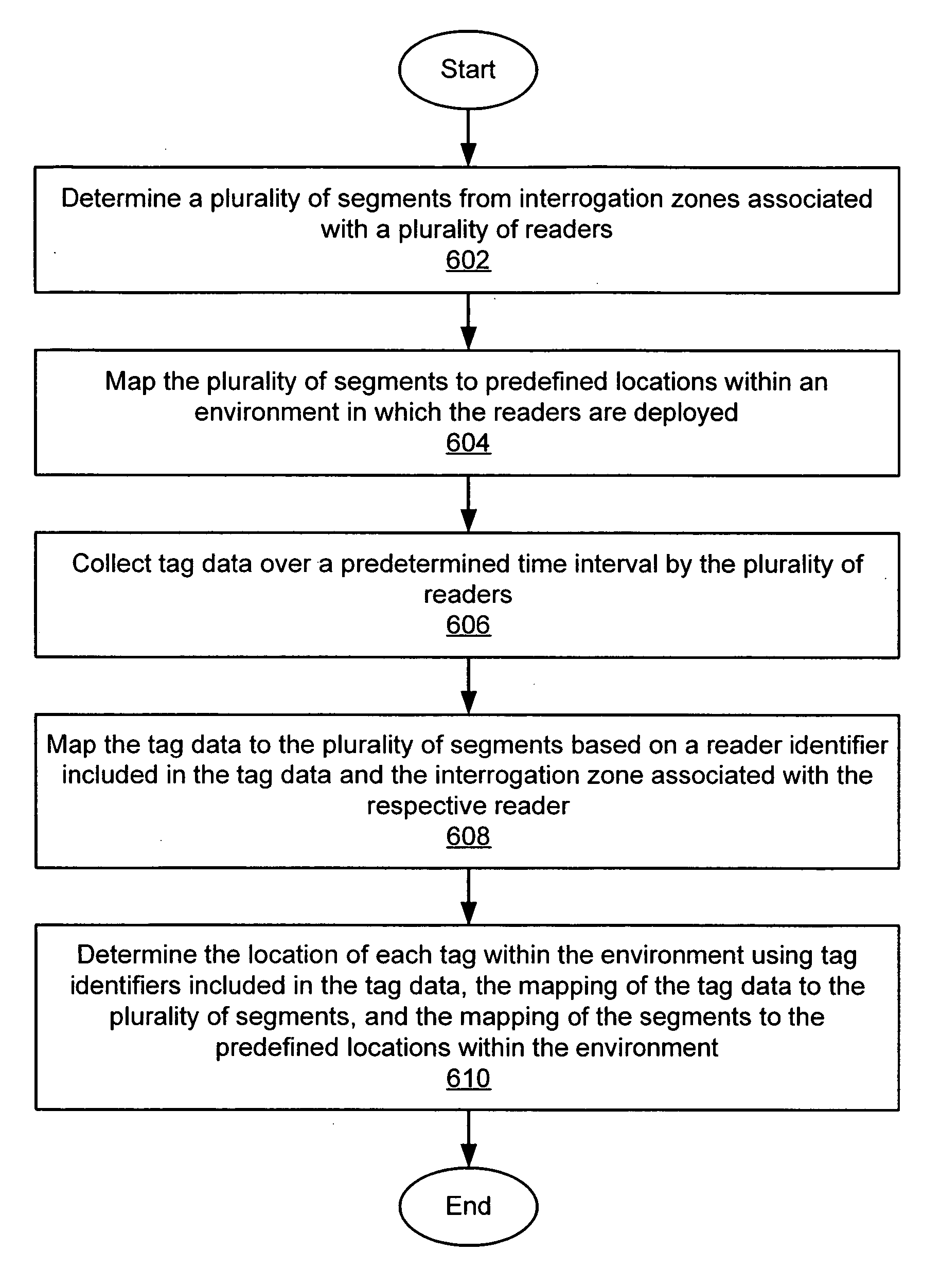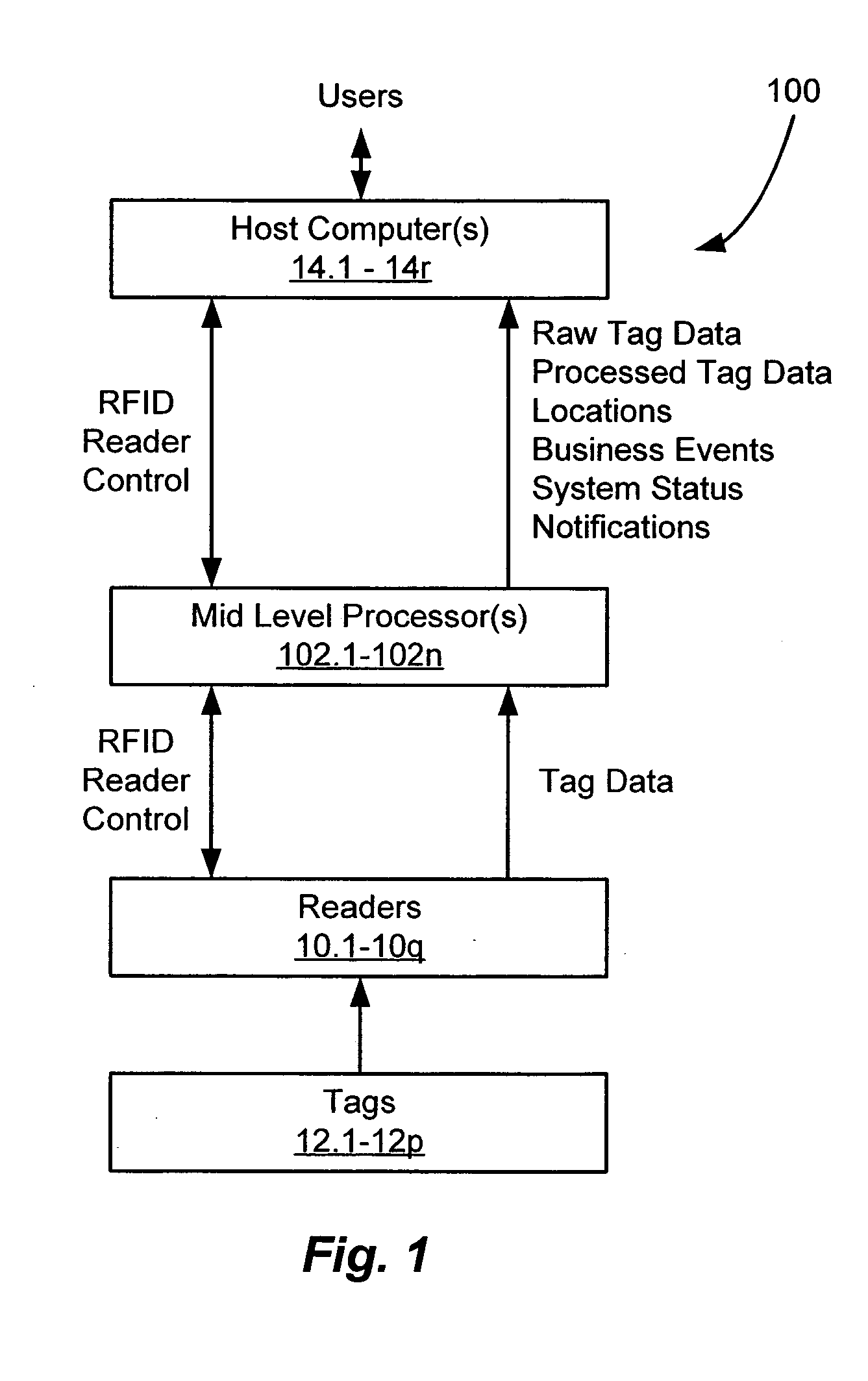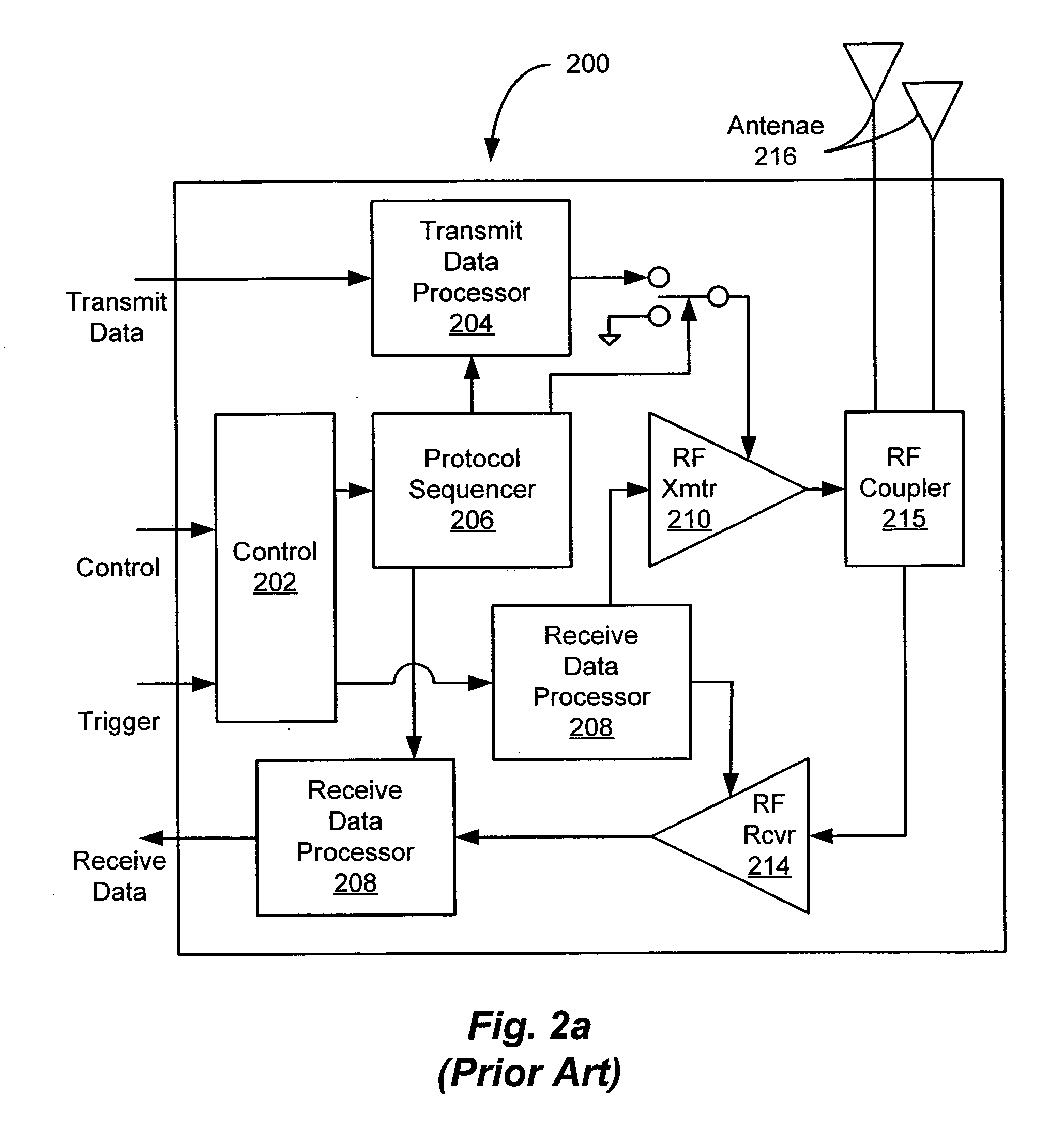Location virtualization in an RFID system
a virtualization and location technology, applied in the field of radio frequency identification systems, can solve the problems of limited life span of active tags, essentially unlimited life span, and conventional rfid systems described, and achieve the effect of increasing reliability
- Summary
- Abstract
- Description
- Claims
- Application Information
AI Technical Summary
Benefits of technology
Problems solved by technology
Method used
Image
Examples
Embodiment Construction
[0055] The disclosure of U.S. Provisional Patent Application No. 60 / 592,933 filed Jul. 30, 2004 entitled ACCESSING RFID TAG DATA USING A READER ARRAY is incorporated herein by reference.
[0056] A system and method of accessing radio frequency identification (RFID) tag data is disclosed that provides enhanced coordination of multiple RFID readers with respect to frequency, time, space, and transmit power. The presently disclosed system employs at least one mid-level processing component and at least one host computer running client software applications. The mid-level processing component effectively transforms the operation of the RFID readers from an aggregated but essentially autonomous operating mode to a highly coordinated operating mode, in which the respective readers effectively function as elements of an RFID reader array. A system and method is also disclosed for determining locations of one or more tags within an RFID environment in which the plurality of readers is deploy...
PUM
 Login to View More
Login to View More Abstract
Description
Claims
Application Information
 Login to View More
Login to View More - R&D
- Intellectual Property
- Life Sciences
- Materials
- Tech Scout
- Unparalleled Data Quality
- Higher Quality Content
- 60% Fewer Hallucinations
Browse by: Latest US Patents, China's latest patents, Technical Efficacy Thesaurus, Application Domain, Technology Topic, Popular Technical Reports.
© 2025 PatSnap. All rights reserved.Legal|Privacy policy|Modern Slavery Act Transparency Statement|Sitemap|About US| Contact US: help@patsnap.com



